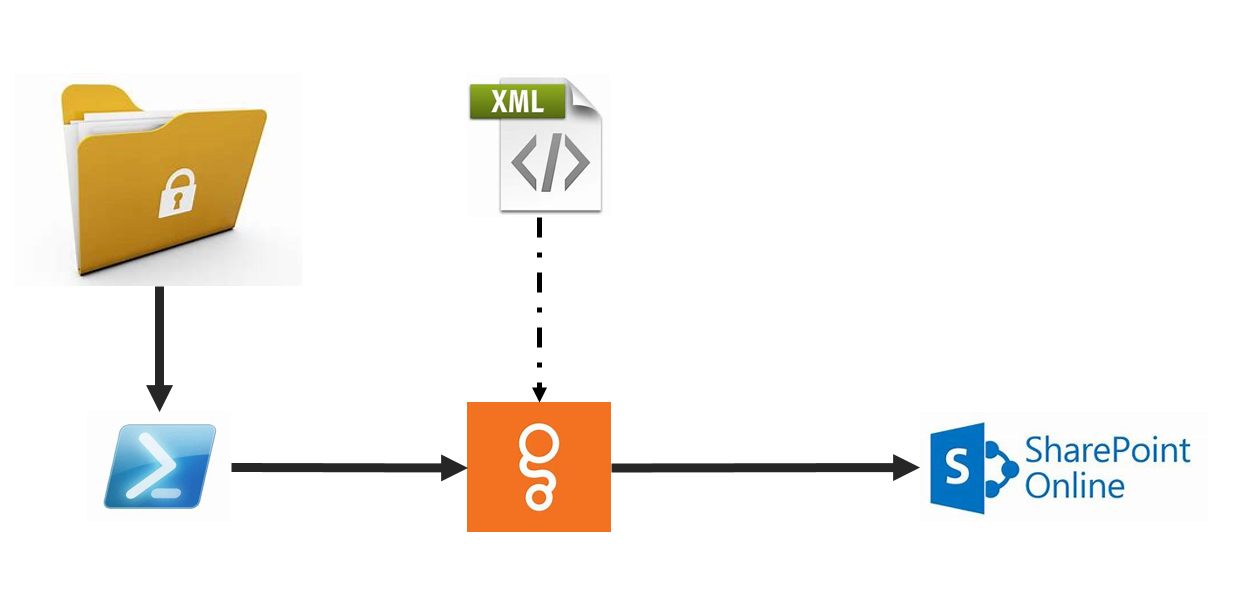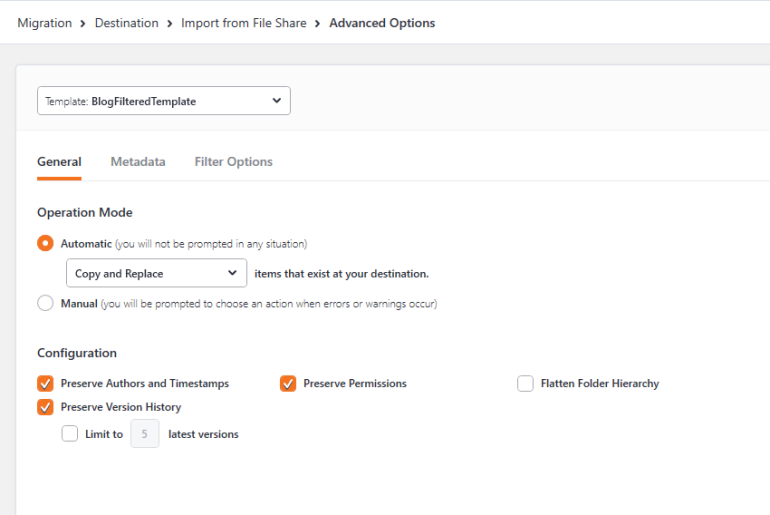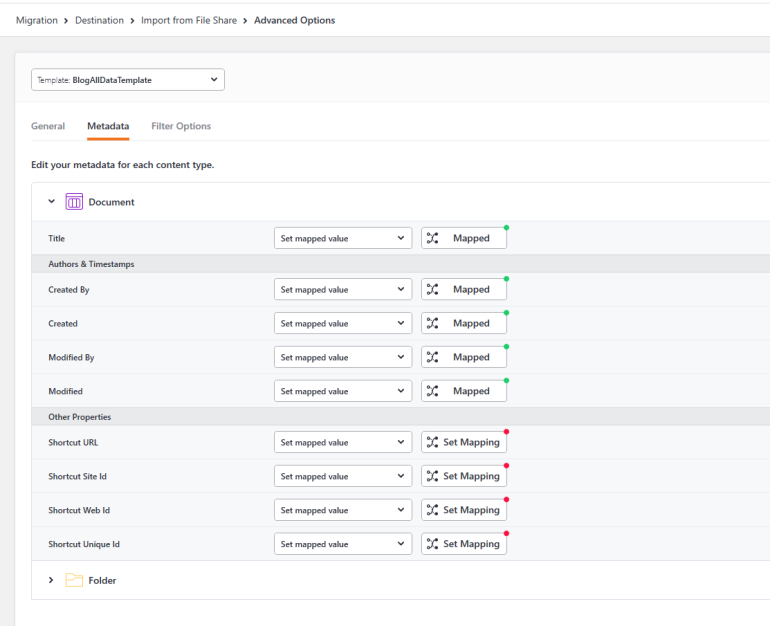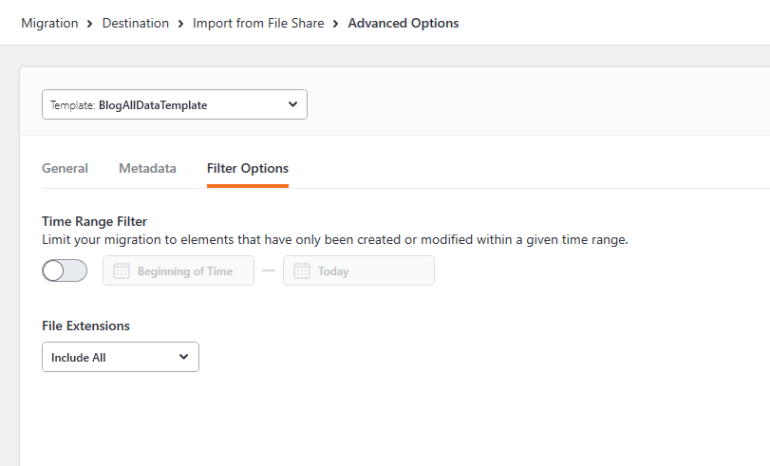
Sharegate supports PowerShell based scripting which can be used to automate and schedule migrations. The purpose of this post is to demonstrate the use of pre-created migration templates to initiate migration tasks in Sharegate using PowerShell scripts. In one of my previous project, we were migrating network shares to SharePoint Online using Sharegate as the migration tool of choice.
Based on our discussions with business divisions and IT department, the following requirements were identified for most of the divisions:
- Office documents, PDFs, Image files will be migrated
- Include only documents modified after a date for e.g. January 1, 2016
- Permissions should be preserved
- There were some exceptions where the identified divisions requested all available data to be migrated.
To address the above business requirements, we created custom migration templates and these templates were used to trigger the migration tasks. This allowed us to do use pre-created configurations for each migration and eliminate of manual overhead and risk of errors. Sharegate migration templates (.sgt files) are xml based configuration documents and encapsulate the configuration options such as:
- Copy options
- Content type mappings
- Allowed extensions
- Cut-off dates
Migration Templates
I’ll present two (2) migration templates, that were prepared to cover off the business requirements:
Template 1 – All data This migration template configures Sharegate to migrate all data to the destination library. The configuration values to be considered are:
- CopyPermissions – Specifies that all permissions on the files / folders be over [configured as “true”]
- KeepAuthorsAndTimestamps – Specifies that the file / folder metadata such as Authors, associated time stamps (created date, modified date) be copied over [configured as “true”]
- ContentFileExtensionFilterType – specifies file extension type filter to copy data [configured as “AllExtensions”]
Template 2 – Filtered Data This migration template configures Sharegate to migrate all the documents that was modified / created after 1st January, 2016 and matches one of the configured extensions to the destination library. The configuration values to be considered are:
- CopyPermissions – Specifies that all permissions on the files / folders be over [configured as “true”]
- ContentFrom – specifies the date cutover anything modified after this date shall be copied [configured as “01/01/2016 10:00:00”]
- KeepAuthorsAndTimestamps – Specifies that the file / folder metadata such as Authors, associated time stamps (created date, modified date) be copied over [configured as “true”]
- ContentFileExtension – specifies that all allowed file type to be copied over [configured as “pdf; xlsx; xls; doc; pptx; docx; ppt; xlsm; rtf; vsd; pub; docm; xlsb; mpp; one; pps; dotx; dot; pot; xlk; vdx; pptm; xlt; xlam; potx; odt; xla; wk4; dic; dotm; xltm; xltx; onetoc2; vss; thmx; vsdx; xps; msg; eml; jpg; cr2; png; tif; psd; bmp; eps; ai; jpeg; gif; indd; dwg; svg; djvu; ico; wmf; dcx; emf; xpm; pdn; cam; ”]
- ContentFileExtensionFilterType – specifies file extension type filter to copy data [configured as “LimitTo”]
Migration templates in Sharegate user interface
The migration templates presented as XML files before may be imported into Sharegate user interface to inspect and test. Migration options are available while configuring a migration as demonstrated in the screen shot provided below:

The screen shots below represent the migration options as visible in Sharegate user interface, when the templates are imported into the tool.
Copy Options Screen – Template 1
Content type mapping screen – Template 1
Filter options screen – Template 1
Copy Options Screen – Template 2
Content type mapping screen – Template 2
 Filter options screen – Template 2
Filter options screen – Template 2
PowerShell scripts to initiate migrations
Migrations can be initiated from PowerShell console by running the following script
The coded migration templates as demonstrated above has merits in terms of eliminating the need to manually configure options for each migration using Sharegate user interface.
To extend this to a whole new level, the overall migration project can further be split into multiple migration tasks and scheduled as sequential migrations across multiple machines utilizing common migration templates and scripts stored in a network location, but that is something I’ll cover off as a part of separate blog post.
Happy Migrating…




